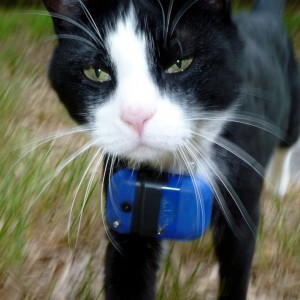An added benefit of gonad removal in cats and dogs is the reduced risk that they will escape their owners’ homes. Research has demonstrated that sterilized pets are significantly less likely to express escape and roaming behaviors than their intact counterparts (Hsu, Severinghaus, & Serpell, 2003). This is likely influenced by a number of factors, such as the urge to mate and increased aggression and territoriality in males due to testosterone.
In addition to putting the animal at greater risk of premature death (increased risk of being killed by cars, wild predators, etc.) and upsetting the owner, escape behavior in domestic cats and dogs is detrimental to local ecosystems. While feral cat colonies are largely responsible for the decimation of native prey species (which is discussed in greater detail in the Feral Cat Populations subheading), domestic cats contribute to this ecological threat more than previously believed.
A recent study by the University of Georgia used “CritterCams” to track the daily activity of 55 outdoor house cats during a 1-year period (Loyd, Hernandez, Carroll, Abernathy, & Marshall, 2013). Their results shocked them: they found that the cats were much more prolific hunters than expected, only bringing back roughly 25% of their kills to their owners (Loyd et al., 2013). Before this study, the number of animals killed by cats annually was estimated based on the number of carcasses returned to their owners; this study revealed that previous figures grossly underestimated how many wild animals are killed by domestic cats each year. In an effort to reduce the number of killings by cats, pressure must be placed on cat owners to keep their cats indoors. As previously mentioned, keeping pets inside is much more difficult with intact animals due to their greater urge to express escape and roaming behavior. Thus, even if someone intends on keeping their cat inside for its entire life and therefore does not worry about it mating with other cats, it is still important to sterilize their cat, as their likelihood of escaping is much greater if left intact.

Photo of a cat equipped with a Crittercam by University of Georgia
And finally, pet owners should be urged to spay and neuter their pets to keep them from contributing to feral cat and dog populations. Likely due at least in part to increased roaming behavior of intact pets, correlations can be found in many regions worldwide between low sterilization rate of pets and large street cat and dog populations (Hsu et al., 2003). For example Taiwan, a nation with rampant stray dog colonies, also has a proportionally low spay/neuter rate of pets (roughly 20%, in contrast to 70% in the United States) (Hsu et al., 2003). I will go into greater detail on issues of feral dog and cat populations in the Trap-Neuter-Release section, but for now I will cite this as another important motivator for owners to spay and neuter their pets.
